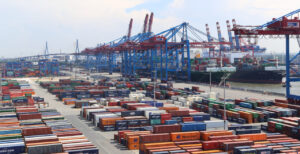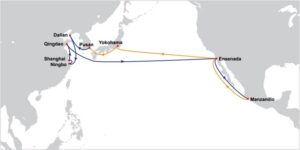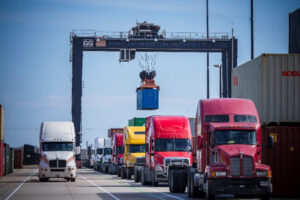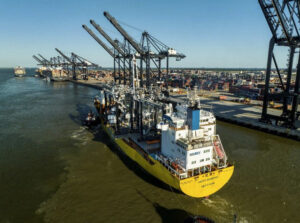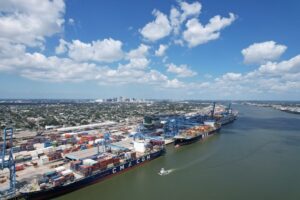CLdN has deployed its first newly built advanced vessel on the route between the Port of Gothenburg and Zeebrugge.
On 20 December, CLdN’s Faustine made its first call at the Port of Gothenburg, it has since reached Zeebrugge loaded with Swedish export goods for the first time.
The vessel is the first of two ordered by the shipping company equipped with a liquified natural gas (LNG), high-pressure, two-stroke, dual-fuel propulsion system that can use liquified natural gas or biogas (LNG/LBG) or diesel.
“We are investing in technologically advanced vessels to reduce climate impact, and Faustine is another step forward on our journey. She has the same capacity as her H5 sister vessels, but due to technical improvements we can optimise the cargo mix more efficiently,” said Emil Holmgren, Country Manager at CLdN.
Faustine calls at the Gothenburg RoRo Terminal in the Port of Gothenburg and is deployed on CLdN’s existing traffic between Gothenburg and Zeebrugge. The terminal is an important destination for Swedish trade with Central Europe, where Zeebrugge is an important hub with a catchment area that includes the entire BeNeLux area, Germany and France.
Jacob Minnhagen, Business Developer at the Gothenburg Port Authority, added “The importance of Belgian traffic for Swedish foreign trade cannot be underestimated and it is very positive that CLdN continues to invest in a new, modern, efficient vessel with good environmental performance.”
This directly links to Gothenburg’s long-term strategy to make alternative fuels more available to ships calling at the port.
The Port of Gothenburg has also recently entered into an agreement with clean energy producers Statkraft to conduct a more in-depth investigation for an interim storage facility and filling station at the port. A preliminary investigation is already underway and is scheduled to be completed by the beginning of 2022.
The planned facility is said to have an initial capacity of 4 MW, producing up to two tonnes of hydrogen per day. Capacity is also able to be expanded in the future if demand increases and new areas of use emerge.


